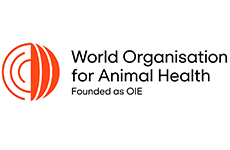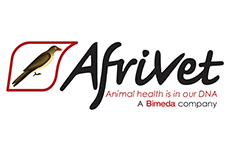- Infectious Diseases of Livestock
- Part 1
- Non-pathogenic Theileria species in cattle
- Vectors: Ticks
- Vectors: Tsetse flies
- Vectors: Muscidae
- Vectors: Tabanidae
- Vectors: Culicoides spp.
- Vectors: Mosquitoes
- Classification, epidemiology and control of arthropod-borne viruses
- Special factors affecting the control of livestock diseases in sub-Saharan Africa
- The control of infectious diseases of livestock: Making appropriate decisions in different epidemiological and socioeconomic conditions
- Infectious diseases of animals in sub-Saharan Africa: The wildlife⁄livestock interface
- Vaccination: An approach to the control of infectious diseases
- African animal trypanosomoses
- Dourine
- Trichomonosis
- Amoebic infections
- GENERAL INTRODUCTION: COCCIDIA
- Coccidiosis
- Cryptosporidiosis
- Toxoplasmosis
- Besnoitiosis
- Sarcocystosis
- Balantidiosis
- Leishmaniosis
- Neosporosis
- Equine protozoal myeloencephalitis
- GENERAL INTRODUCTION: BABESIOSES
- Bovine babesiosis
- Equine piroplasmosis
- Porcine babesiosis
- Ovine babesiosis
- GENERAL INTRODUCTION: THEILERIOSES OF CATTLE
- East Coast fever
- Corridor disease
- Zimbabwe theileriosis
- Turning sickness
- Theileria taurotragi infection
- Theileria mutans infection
- Theileria annulata theileriosis
- Theileriosis of sheep and goats
- Theileria buffeli⁄orientalis infection
- Non-pathogenic Theileria species in cattle
- GENERAL INTRODUCTION: RICKETTSIAL, CHLAMYDIAL AND HAEMOTROPIC MYCOPLASMAL DISEASES
- Heartwater
- Lesser known rickettsial infections in animals and humans
- Chlamydiosis
- Q fever
- Eperythrozoonosis
- Bovine Haemobartonellosis
- Potomac horse fever
- GENERAL INTRODUCTION: ANAPLASMOSES
- Bovine anaplasmosis
- Ovine and caprine anaplasmosis
Non-pathogenic Theileria species in cattle
This content is distributed under the following licence: Attribution-NonCommercial CC BY-NC  View Creative Commons Licence details here
View Creative Commons Licence details here
Non-pathogenic Theileria species in cattle
Current Authors:
J A LAWRENCE - Extraordinary Professor, DPhil, BSc, MRCVS (ret.), DTVM, Department of Paraclinical Veterinary Science, University of Zimbabwe, Harare, Zimbabwe
C BYARUHANGA - Post-doc Fellow, BVM, MVPM, PhD, Department of Veterinary Tropical Diseases, Para-clinical Building, Faculty of Veterinary Science, University of Pretoria, 100 Old Soutpan Road, Onderstepoort, Pretoria, Gauteng, 0110, South Africa
M OOSTHUIZEN - Parasitology, PhD, Department of Veterinary Tropical Diseases, Faculty of Veterinary Science, Private Bag X04, University of Pretoria, Pretoria, Gauteng, 0110, South Africa
B J MANS - Principal Researcher, BSc, BSc (Hons) Biochemistry, MSc (Biochemistry), PhD (Biochemistry), Agricultural Research Council, Onderstepoort Veterinary Research, 100 Old Soutpan Road, Pretoria, Gauteng, 0110, South Africa
Introduction
A number of species of Theileria occur in cattle without causing disease. Theileria taurotragi, T. mutans and T. buffeli/orientalis most commonly cause inapparent to mild diseases and only occasionally result in more severe disease. Other species that have been identified without ever having been implicated in disease in cattle are:
- Theileria taurotragi clade - Theileria sp.(bougasvlei), Theileria sp. (buffalo)
- Theileria velifera clade - Theileria velifera, Theileria velifera A, Theileria velifera B, Theileria sp. RR-2012
- Antelope clade - Theileria sp. (sable), Theileria sp. (sable-like) – infectivity for cattle doubtful
- Theileria buffeli clade - Theileria sinensis, Theileria sinensis-like, Theileria sp. RMP-2013
The T. taurotragi clade is mostly composed of pathogenic Theileria, namely T. annulata, T. lestoquardi, T. parva and T. taurotragi (see Introduction Theilerioses of cattle). However, two more species are found in this clade that have to date not been associated with clinical disease, namely T. sp. (buffalo) and T. sp. (bougasvlei) 21, 22 These genotypes are unique species in their own right based on 18S, Cytochrome oxidase I (COI) and S5 ribosomal gene analysis 21, 34 but they have not been given appropriate species names as their tick vectors remain unknown and their complete life cycles have not been elucidated.
Theileria velifera was first described 40 in Madagascar, under the name Haematoxenus veliferus, as a benign parasite of cattle characterized by the presence of a veil-like structure associated with intra-erythrocytic piroplasms (Figure 1). The parasite is widespread in eastern and southern Africa and also occurs in the Caribbean. It has no practical significance other than its role in confusing the diagnosis of Theileria parva. The parasite also infects African buffalo (Syncerus caffer). 36 Ancestral relationships have shown that the T. velifera clade is composed of four genotypes, T. velifera, T. velifera A, T. velifera B and Theileria sp. RR-2012, a yet undescribed genotype from cattle in India. 22 Whereas T. velifera B has only been reported in African buffalo, T. velifera and T. velifera A have been found in cattle and African buffalo. 7, 8, 21, 22
Theileria sp. (sable) causes mortality in naïve roan antelope (Hippotragus equinus) and sable antelope (Hippotragus niger) and presented as a lymphoproliferative condition in these antelope. 28 Transformed schizonts of T. sp. (sable) can be maintained in cell culture similarly to T. parva and T. sp. (buffalo). 50 Sable and roan antelope are considered the natural carrier host but identical genotypes based on the 18S rRNA genes have been found in dogs. 24 Reverse line blot has also indicated the extensive presence of T. sp. (sable) in cattle, African buffalo, blesbuck (Damaliscus pygargus), blue wildebeest (Connochaetes taurinus), klipspringer (Oreotragus oreotragus), reedbuck (Redunca arundinum) and nyala (Tragelaphus angasii). 1, 27, 28, 32, 47 A closely related genotype, T. sp. (sable-like) that differs by 6 base pairs in the V4 hypervariable region of the 18S rRNA gene has been described in a single ox in South Africa that presented with clinical signs of theileriosis, with high schizont parasitaemia and lymphoid infiltration of organs. 21 However, subsequent screening of cattle from South Africa using sequencing of the 18S rRNA gene failed to detect either T. sp. (sable) or T. sp. (sable-like). 23 Potential cross-reactivity with T. velifera in the reverse line blot probe has been considered as a possible explanation for this discrepancy.21
Theileria sinensis was first described in cattle in China based on infectivity studies, morphological observations and its inability to be transmitted by Hyalomma detritum and Haemaphysalis longicornis, the vectors of T. annulata and T. sergenti respectively. 4, 5 It was assigned to the T. buffeli/orientalis clade after molecular analysis and was named T. sinensis after classic taxonomic and molecular studies. 15 Molecular analysis based on the ITS1, ITS2 and 5.8S rRNA genes clearly differentiate it from T. sergenti and other members of the T. buffeli/orientalis clade, supporting its designation as a unique species in this clade. 18 A genotype and a possible new species, T. sinensis-like, that is closely related to T. sinensis, has been described in African buffalo in South Africa. 21 Screening of cattle and African buffalo using next-generation sequencing of the 18S rRNA gene indicated that this species is only found in buffalo. 23 A...To see the full item, register today:




